A bolero is a versatile accessory that can be combined with both evening wear and a strict office style for every day. Below we will discuss how to sew a bolero with your own hands quickly and without a pattern.
What you will need for work
To make a bolero yourself, you need to understand that it can be of various styles, from different types of fabric. There are models without buttons and fasteners with a one-piece sleeve, others with a zipper and long sleeves, and others crocheted.
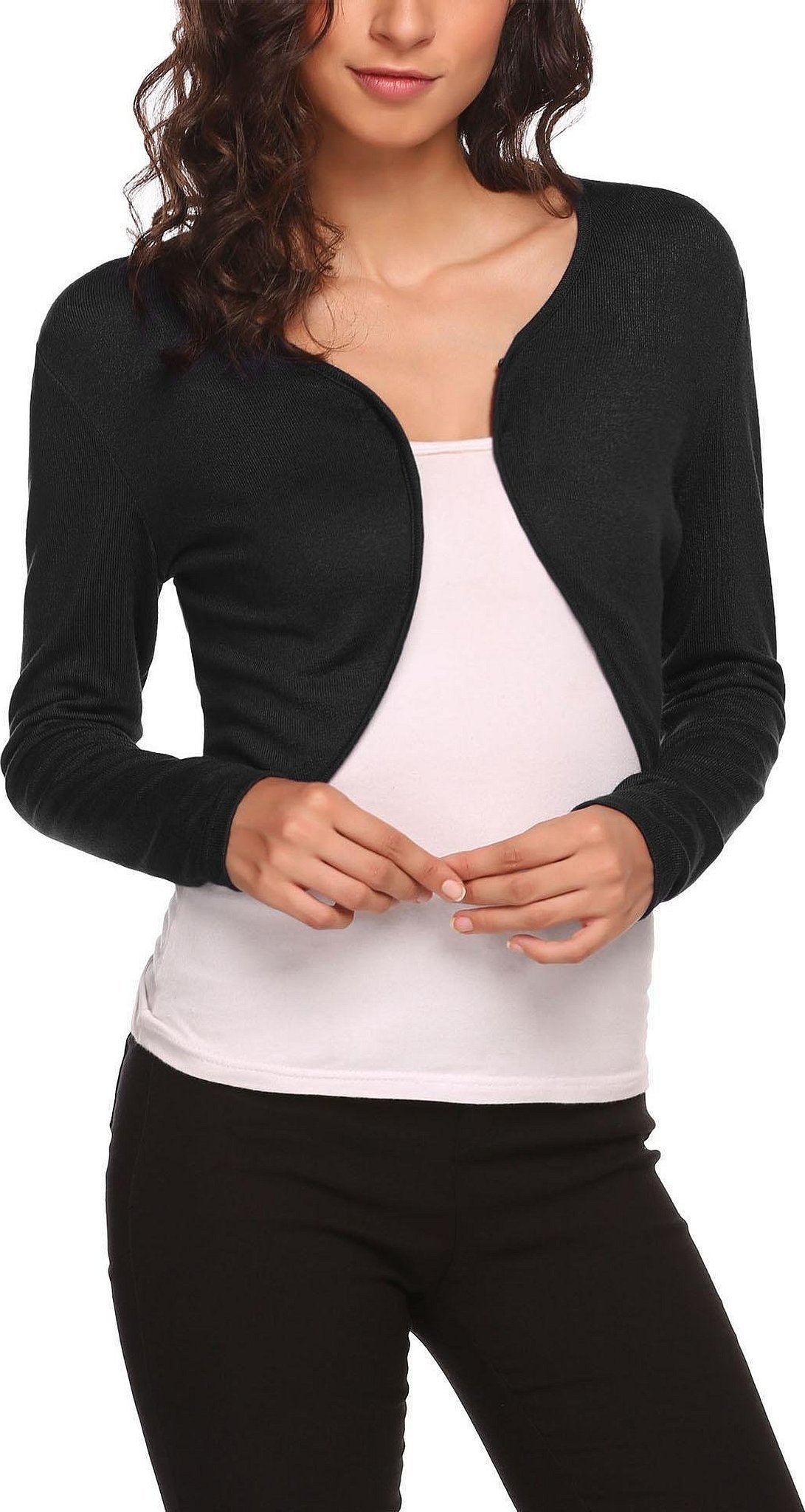
You need to start from your style and personal preferences. You should also pay attention to the style and clothes that such an accessory will be combined with. For example, a short denim jacket with three-quarter sleeves will suit a casual T-shirt. For an evening dress, you need to choose a different style - with fur or knitted.
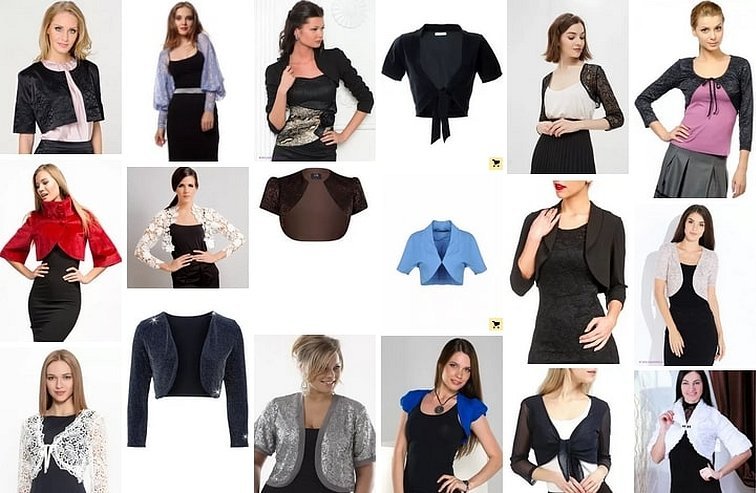
In addition to the fact that the bolero complements the image and gives it completeness, it can be used as outerwear. For example, on summer evenings, when it is cool, the bolero is irreplaceable for a walk, to put it on over a top or a light blouse.
To make a bolero yourself, you need to prepare the tools and materials needed for the job in advance:
- fabric or item from which the bolero will be remade;
- threads, needles, sewing machine;
- centimeter, ruler;
- chalk or soap;
- decorations if needed.
Once everything is prepared, you can start working.
How to model a bolero pattern
Modeling a pattern involves drawing up a drawing of the future product. To implement it, you need to know the approximate model of the jacket and take measurements from the model on which it will be sewn. You need to know the girth of the neck, chest, waist. It is also worth immediately deciding on the length of the product. A bolero can be up to the chest, navel or waist.

The drawing is made in the following sequence:
- First, a vertical straight line is drawn on paper, from which the future pattern will be built. The length of the line = the length of the product. When making a drawing according to measurements, it is necessary to add 1-2 centimeters on each side for seams and allowances.
- Two horizontal lines are drawn perpendicular to the drawn line, the length of which corresponds to the measurements of the POG and POSH. The parts are aligned along the side seams.
- After this, the back part is drawn. A vertical line is drawn from the chest line to the bottom of the garment. To make the bolero fitted, it can be narrowed by a few centimeters towards the bottom so that the garment fits the figure.
- From the neck level, you need to draw a shoulder line. The sleeve is constructed in accordance with the model. If it is required, then a line is drawn to the required length at a right angle.
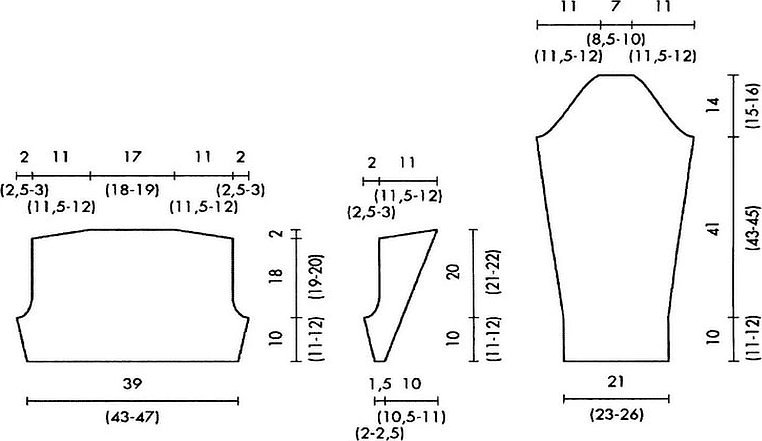
How to cut a bolero jacket
The pattern of a bolero for a dress without sleeves or with sleeves is made according to the same principle. After that, you need to do the following:
- Fold the fabric evenly in half with the right sides facing inward on a flat, hard surface (a table or the floor is best).
- The pattern is laid out on the fabric, pinned with needles and outlined with chalk or soap.
- After this, the details need to be carefully cut out and basted.
- Before stitching the product, you need to baste and measure it (mandatory).
How to sew a bolero without a collar
To make a collarless garment, a slightly different pattern is drawn: the front, back and sleeves are at the same level. Even a beginner can easily make this style. It does not require any special sewing skills. The fabric parts are cut out according to the pattern and sewn along the seams. The top can be hemmed or finished with bias tape.
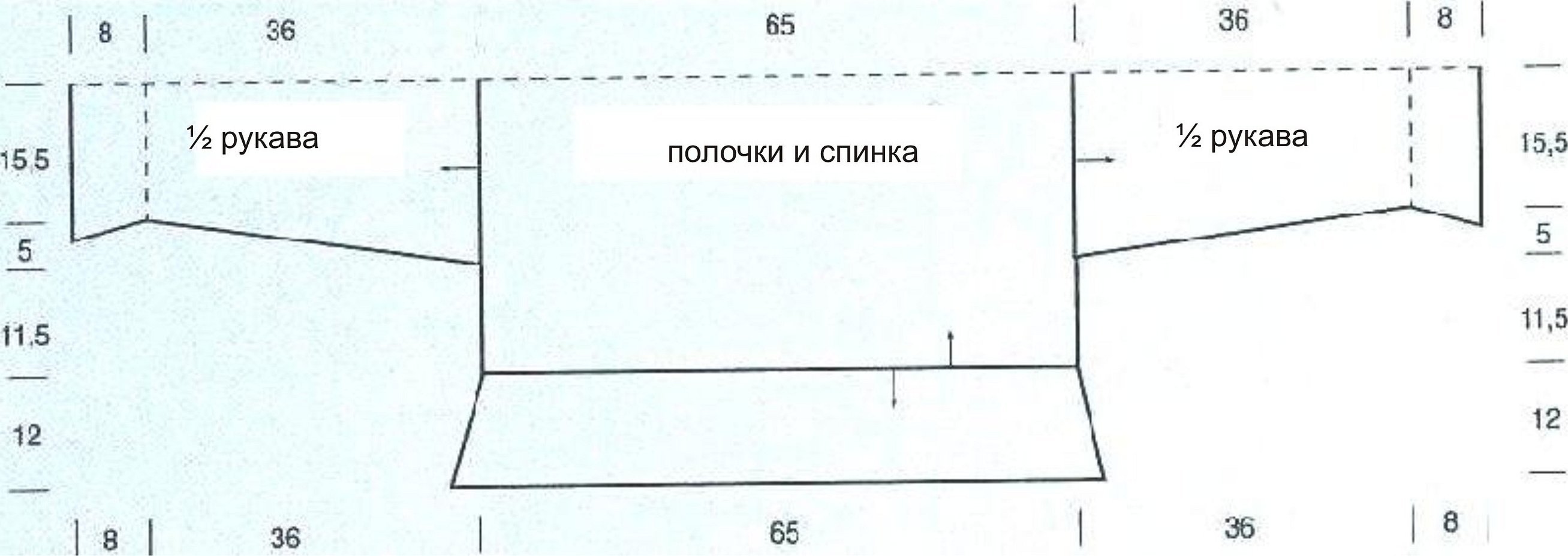
DIY Bolero from a T-shirt
Many people are interested in how to sew a fashionable cotton bolero. Such a model can be easily remade from a regular T-shirt or tank top. Let's look at several interesting styles that you can make yourself in a matter of minutes:
- Bolero with ruffles. For this, you will need a regular T-shirt or tank top. The product must first be cut to the required length. A cut is made in the middle and the edges are processed. They can be left free or made with a lock, buttons. In this case, the bottom can be hemmed or ruffles or lace can be sewn to it. It is better to use a sewing machine so that the product turns out neat and durable.
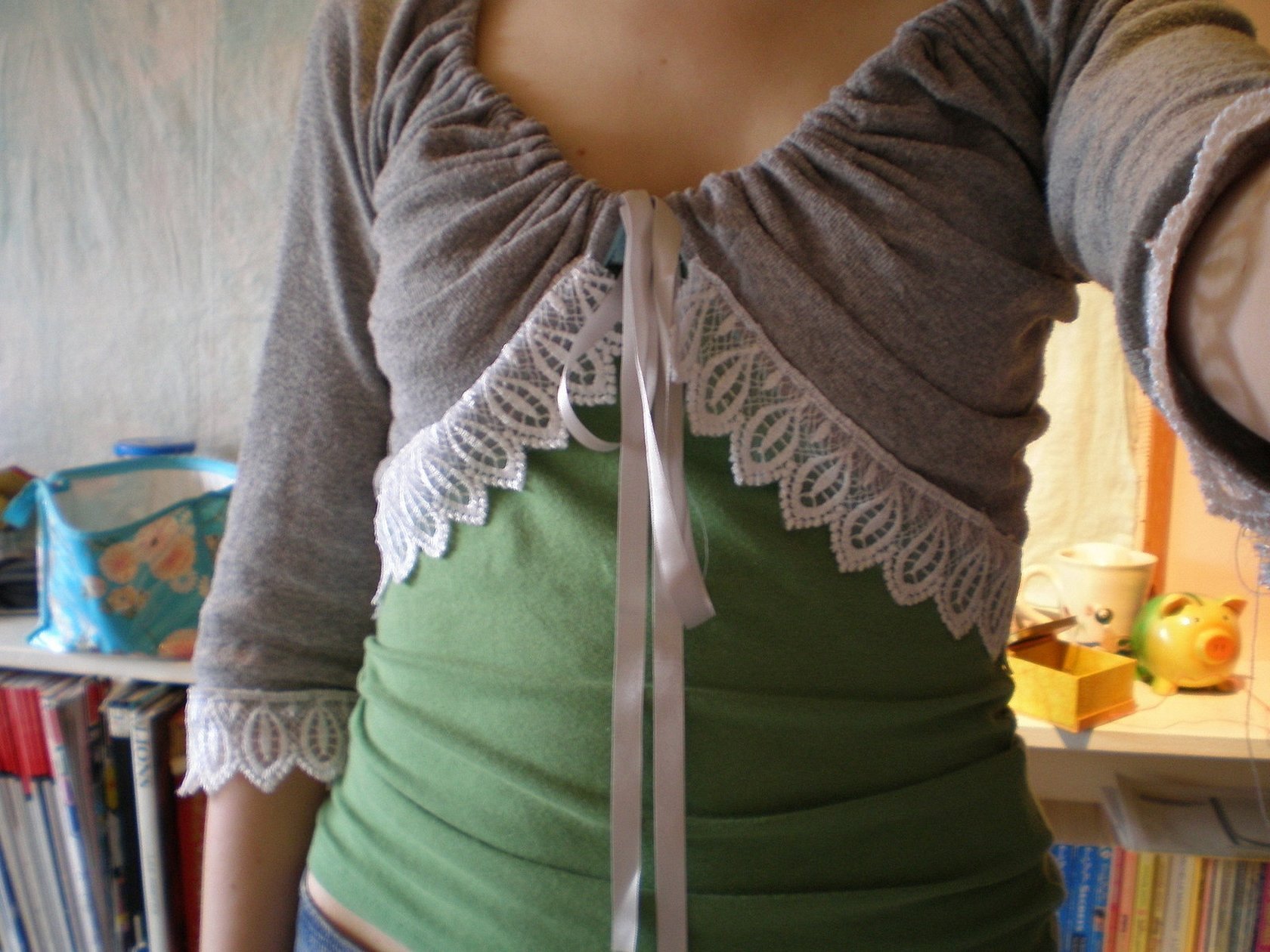
- A bolero with laces can be sewn from cotton or jersey. An old T-shirt needs to be straightened and ironed. Then a cut is made in the front center and around the neck so that it can be used to make a tunnel for the lace. First, a mark is applied, then stitched on a machine. After that, a lace (or tape) is threaded through and the bolero is ready. It needs to be tightened to fit the figure, depending on the desired length of the product. If it is too long, you can trim it a little at the bottom, hem it and stitch it so that the product has an aesthetic appearance. Such a product can complement any dress for a girl.
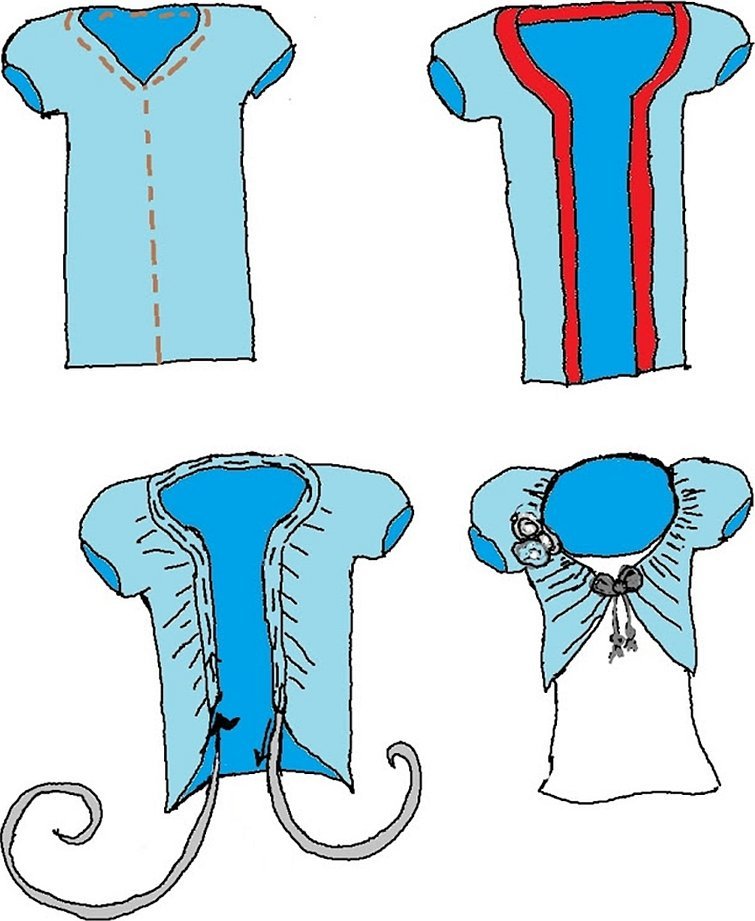
The advantage of a bolero made from a T-shirt is that you can make it yourself in a matter of minutes. Such a thing will suit children and adult women. You don’t need modeling, cutting and sewing skills for this, and you don’t need to make a drawing or pattern.
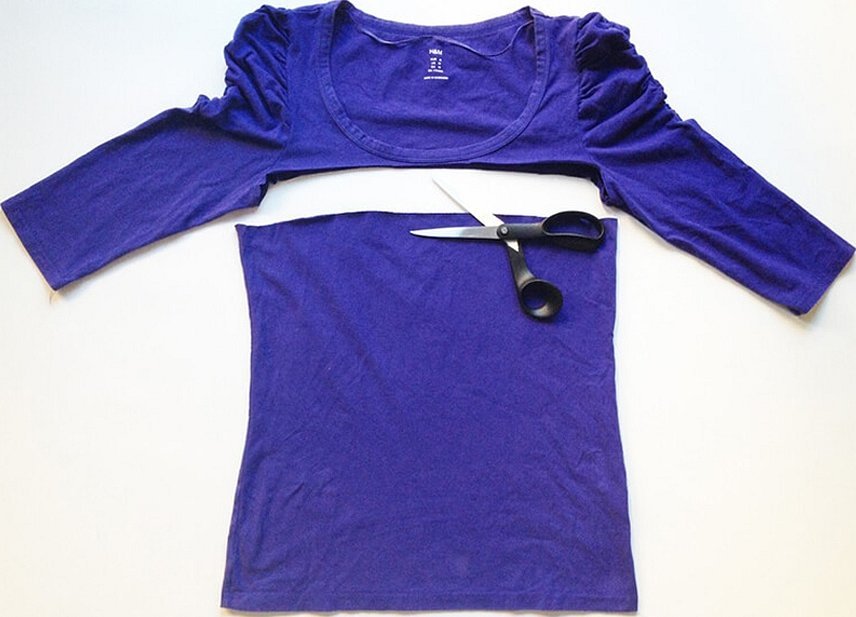
Plush bolero
This item will perfectly match a smart dress. It is an original and warm accessory. Most often, it is cut with sleeves, as it is designed to provide warmth in the cold season. Plush, fur or eco fur are used as a basis. A lining is needed for this model. It can be made from any fabric. You also need to buy a braid for edging. The product is sewn according to a standard pattern, only it is desirable to make the sleeves long and one-piece. All seams are machine-processed, the edges are hemmed.
This item is suitable for both going out and everyday wear. It looks good with a dress and jeans.
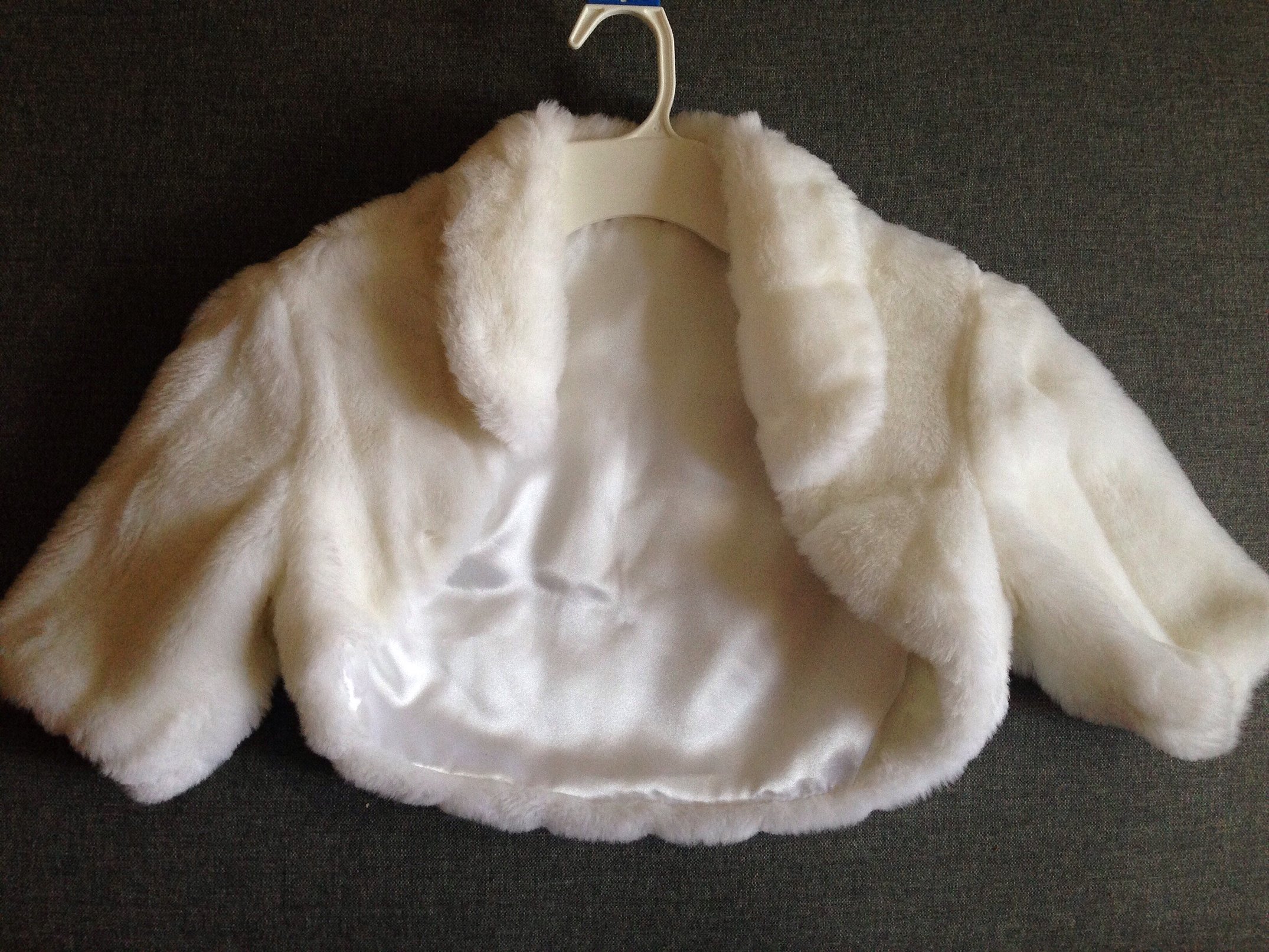
Pattern of a bolero with a one-piece sleeve
This style can be cut in any length. Fasteners can be made as desired. The peculiarity of the model is that the sleeve is cut out immediately, that is, it is cut out of the fabric together with the product, while standard sleeves are cut separately and then sewn on.
The pattern consists of three parts: the back and two parts of the front. This option is quite simple and free, like oversize. The item can be decorated with rhinestones, transfers or buttons. The product will suit a woman with a delicate image, complement a dress or a formal suit with a T-shirt or a fitted blouse.
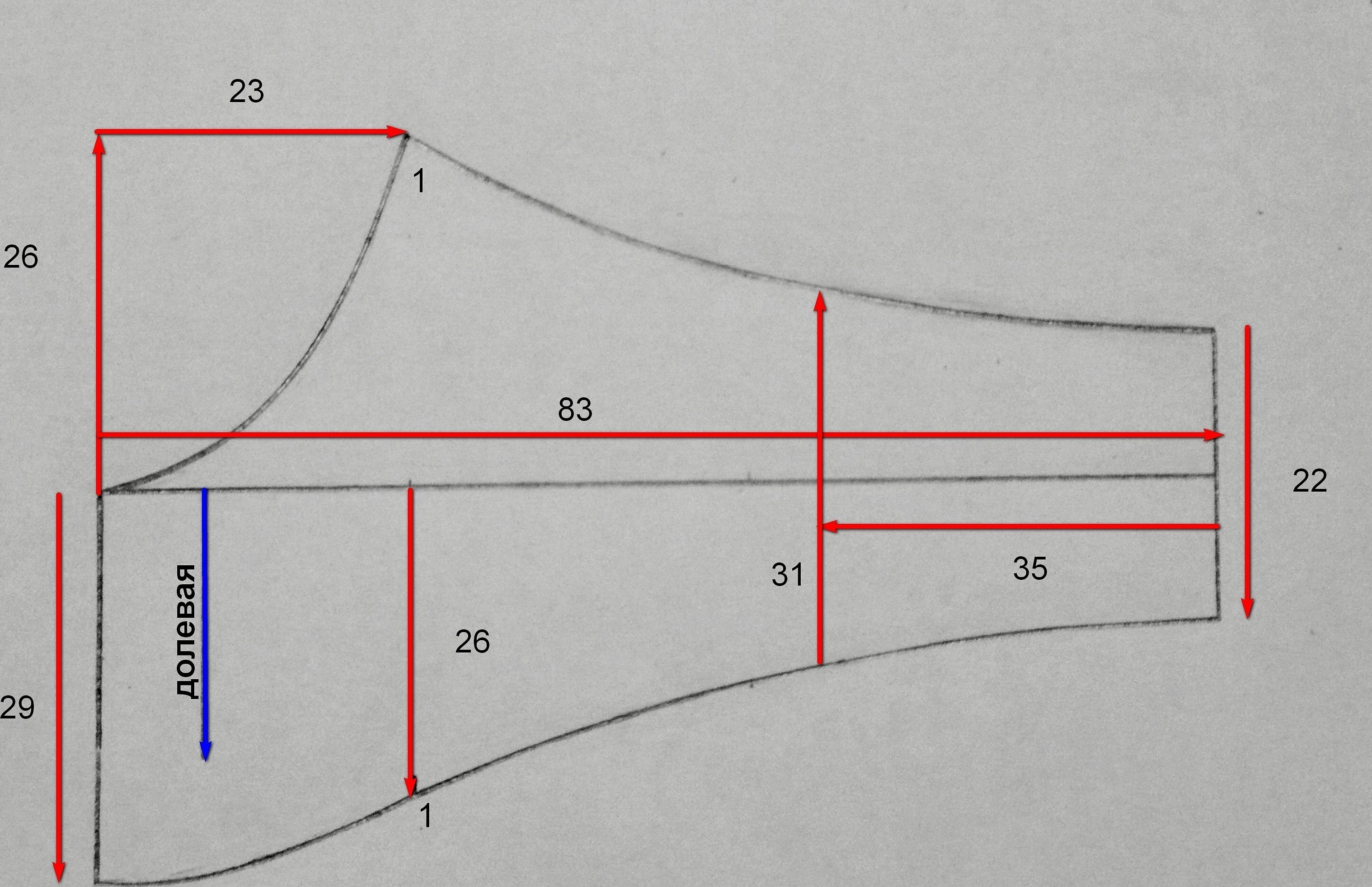
You can see the process of cutting and sewing the product in more detail in the following video:
What to combine with
You can combine a bolero with absolutely all styles. The main thing is that the item fits the figure. A bolero looks ridiculous with tops with bare shoulders or oversize T-shirts/blouses (any size). It looks appropriate with fitted skinny trousers or jeans. A bolero of any cut fits perfectly on thin girls if combined with skirts of any length and fitted blouses (tops, vests).
If the jacket is decorated with fur or rhinestones, it is better to wear it with simple golf socks or fitted blouses. Do not wear it over ruffles or jabots.
Advice! Full-figured women with large breasts should avoid short jackets, because they already visually add volume.
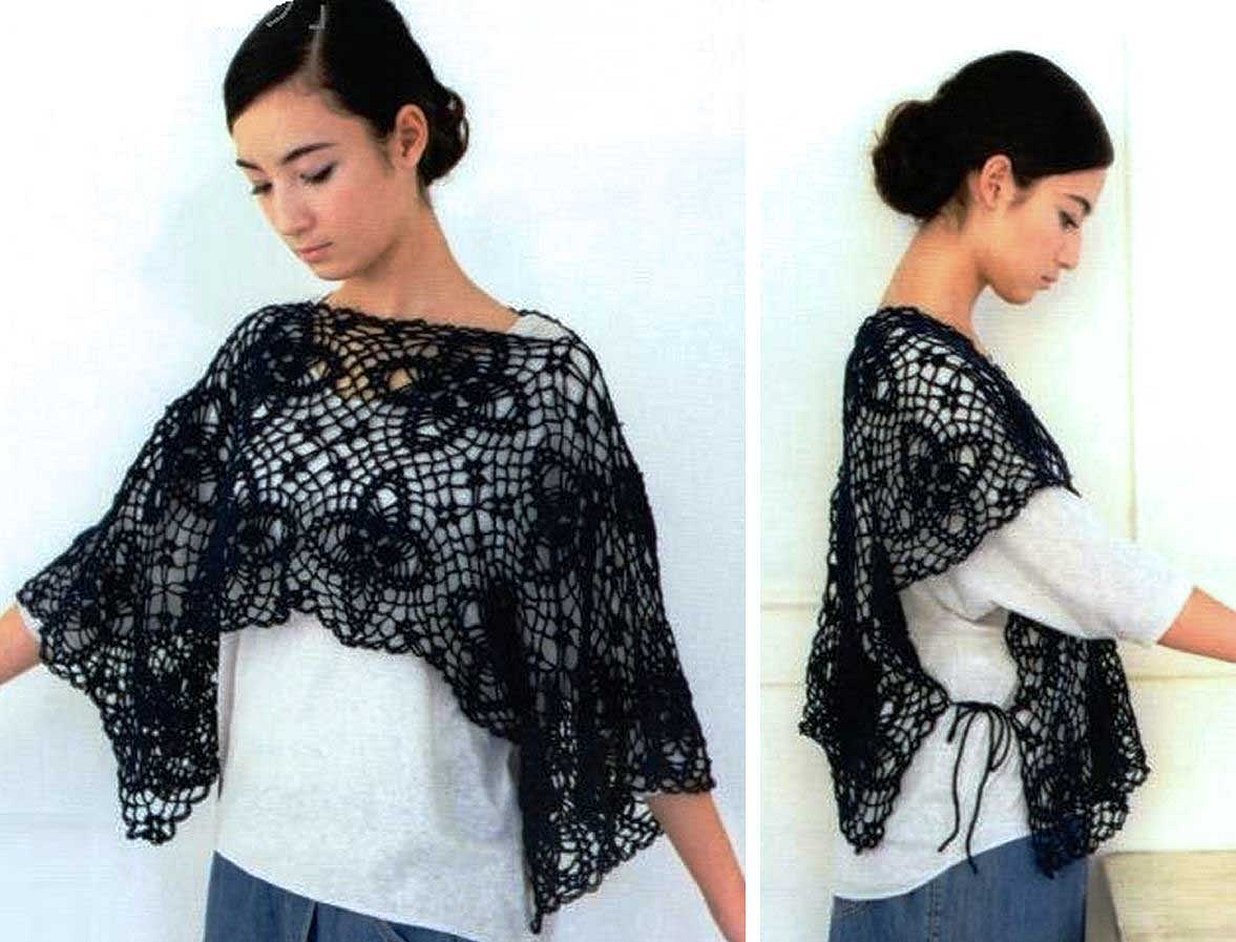
Even a novice craftswoman can quickly sew a bolero with her own hands without a pattern. To do this, you need to be patient and attentive, because any work requires calmness and determination.




